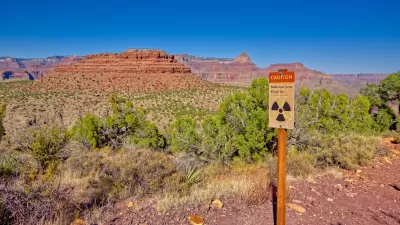Two years after Governor Andrew Cuomo outlined an ambitious 10-year, $1 billion effort to revive the Buffalo Niagara economy, the areas targeted for investment are beginning to become clear, reports David Robinson.

The help Buffalo "[turn] around an economy that has missed out on much of the nation’s growth over the past half century", the State of New York is planning to replicate an economic development strategy that spurred billions of dollars in private investment and created thousands of jobs in Albany, explains Robinson. "The Buffalo Billion is following the Albany model to try to create a hub for clean energy research and manufacturing, as well as a center for medical genomics research centered around the University at Buffalo’s supercomputing capabilities."
"But the most immediate benefit of the Buffalo Billion is its 'shock and awe' value. It has already brought the Buffalo Niagara region notice as a place where something is going on. State officials hope that positive attention will build on the Buffalo Billion’s momentum."
Robinson details nine projects that are in line to receive funding as part of the initiative:
- $225 million towards a high tech manufacturing innovation hub at RiverBend
- $50 million towards a medical innovation and commercialization hub
- $50 million towards a genomic research partnership
- $10+ million towards workforce training and development
- "ten of millions" towards an Institute for Advanced Manufacturing Competitiveness
- $20 million towards the downtown Niagara Falls development challenge
- $11.5 million towards Robert Moses Parkway removal
- $4.5 million to stimulate the city's visual effects industry
- an unknown amount to help transform a vacant mall owned by the city of Niagara Falls into a mixed-use complex
FULL STORY: Your guide to the Buffalo Billion

Planetizen Federal Action Tracker
A weekly monitor of how Trump’s orders and actions are impacting planners and planning in America.

Maui's Vacation Rental Debate Turns Ugly
Verbal attacks, misinformation campaigns and fistfights plague a high-stakes debate to convert thousands of vacation rentals into long-term housing.

Restaurant Patios Were a Pandemic Win — Why Were They so Hard to Keep?
Social distancing requirements and changes in travel patterns prompted cities to pilot new uses for street and sidewalk space. Then it got complicated.

In California Battle of Housing vs. Environment, Housing Just Won
A new state law significantly limits the power of CEQA, an environmental review law that served as a powerful tool for blocking new development.

Boulder Eliminates Parking Minimums Citywide
Officials estimate the cost of building a single underground parking space at up to $100,000.

Orange County, Florida Adopts Largest US “Sprawl Repair” Code
The ‘Orange Code’ seeks to rectify decades of sprawl-inducing, car-oriented development.
Urban Design for Planners 1: Software Tools
This six-course series explores essential urban design concepts using open source software and equips planners with the tools they need to participate fully in the urban design process.
Planning for Universal Design
Learn the tools for implementing Universal Design in planning regulations.
Heyer Gruel & Associates PA
JM Goldson LLC
Custer County Colorado
City of Camden Redevelopment Agency
City of Astoria
Transportation Research & Education Center (TREC) at Portland State University
Jefferson Parish Government
Camden Redevelopment Agency
City of Claremont





























